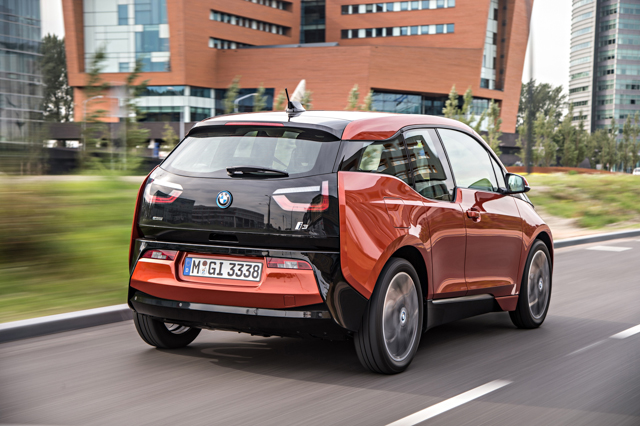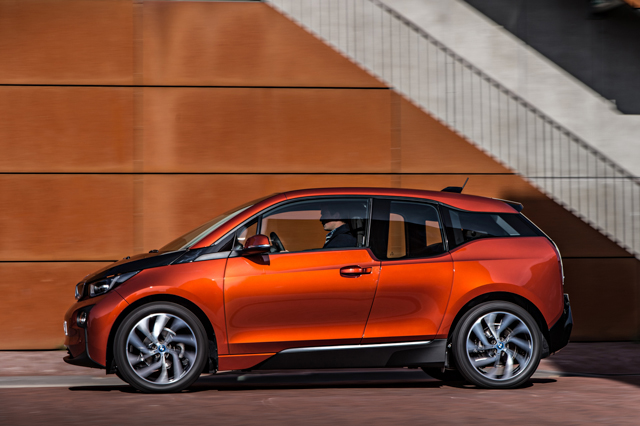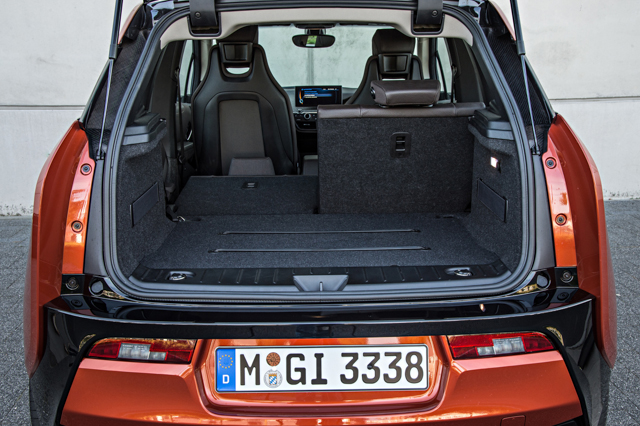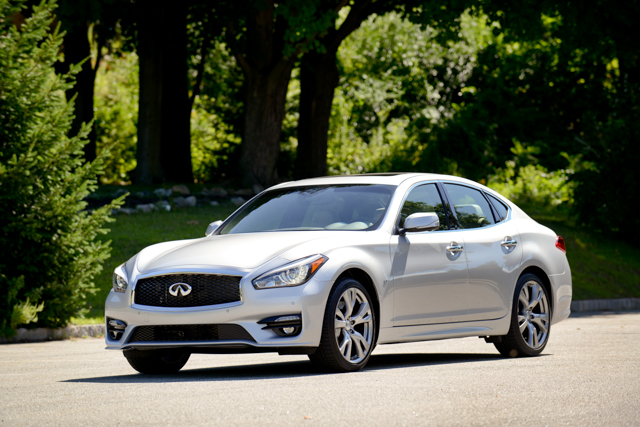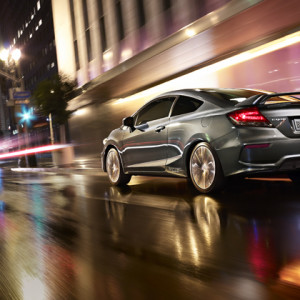The electric-car industry hasn’t just been characterized by revolutionary technology, but by entirely new ways of thinking about automobiles, their marketing, and their place in society. General Motors and Ford are approaching electrics with a fresh eye, and Tesla seems to be trying to change the game entirely. With that spirit of innovation and thinking outside the box, it’s no surprise that BMW’s i3, the first member of what will soon be a family of i-badged, alternative-fuel BMWs, aims to be much more than the brand’s usual “ultimate driving machine.”
Project i is intended to “shape the mobility of the future.” BMW is not just addressing alternative-fuel and electric vehicles, but the very concept of changing modes of transportation. Case in point: More than half the world’s population lives in large cities, and by 2050 that number is projected to rise to more than 70 percent. BMW envisions the need for sustainable cars that provide more than just transportation, but are environmentally friendly from initial construction all the way to scrapping, and that are an integral part of a driver’s life, in much the same way that smartphones have transcended their communications-device origins.
That’s an awful lot of philosophy, and it’s easy to get caught up in the grand social schemes that BMW envisions for the i3. But what about the car that these idealistic visions have created? As it turns out, down beneath the philosophy and marketing, the i3 offers a pretty impressive drive. To demonstrate, BMW turned the cars loose in Amsterdam, whose crowded streets are home not just to cars but to buses, trams, bicycles, scooters, pedicabs and, of course, pedestrians. Add to this mix an endless maze of narrow lanes, one-way streets, drawbridges and myriad canals, and the result is an extremely challenging driving environment. The streets are a riot of narrow lanes, and as with any city, everyone’s in a hurry.
Amsterdam is hectic enough as a passenger, let alone when trying to pilot a vehicle. But the i3 makes the worst traffic manageable with outstanding, instant acceleration, responsive steering and strong brakes — just like a sports car. All of these are things BMW is good at, but this kind of driving’s different, in many subtle ways, and the i3 is tuned for it. After all, an M3 embodies the same attributes, but would likely be miserable to drive in Amsterdam. The i3, on the other hand, takes advantage of an extremely low center of gravity and a short wheelbase to provide instantaneous steering response. The four-wheel independent suspension is stiff, but that enables the car to make the most of its extremely narrow low rolling-resistance tires. On a track, the i3 is apt to be under-tired, but in its environment it’s just right. An insanely tight turning circle makes parking and maneuvering simple no matter how congested the roads are.
The i3 is powered by a synchronous electric motor that produces 170 horsepower. Like most direct-drive electric cars, all 184 pound-feet of torque is available immediately, and floorboarding the pedal results in dramatic acceleration, up to about 50 mph. The i3 accelerates hard, but not endlessly. The performance profile is different than that of a traditional sports car, however, so it’s easy to rein in the car. In a congested city environment, it’s good to get quickly to “fast enough” but no faster, which makes it easier to react to rapidly changing driving situations. To help with this, the i3 uses what BMW calls “one-pedal drive.” Basically, the regenerative braking system is dialed up so high that lifting off of the accelerator will cause the car to roll quickly to a stop. Not only does this maximize battery charging, it also means that the i3 is very easy to control. The brake pedal is only necessary for emergency stops; most of the time the driver can simply lift off and coast to a halt. Should it need to tackle a freeway, it’s capable of keeping up with traffic without undue strain, though crosswinds can be a problem, thanks to the high profile and light weight. The range is about 80 miles; a gasoline-powered “range extender” engine also is available, and may be a popular option in the U.S. Above all else, the i3 is easy to drive.
It’s easy on the eyes as well. Rather than creating a bland, featureless box, BMW’s designers applied their usual flair for the subtly dramatic, and the result turns heads even when it’s not painted orange. The i3 is larger than photos make it seem. It’s short and tall, kind of like the Ford Edge, but it doesn’t look awkward and BMW’s complex surfaces look good on the car. Generous use of piano-black trim around the edges of the car helps to emphasize the lines, and the unique greenhouse is a polarizing but distinctive feature. The kidney grille up front is just for show, as the electric motor doesn’t require any intake air, and lightweight LED lighting’s used front and rear.
The i3’s body is another example of the new i division’s philosophy. BMW believes that an urban car should serve as private space, in addition to navigating traffic and providing transportation. As a result, the i3 provides ample room for four passengers in a high-roofed “loft” space similar to that of the Fiat 500L. Half-doors make entry to the rear easy, and there’s a generous cargo area in the back. It’s considerably more spacious than the one-box styling suggests.
The interior is also quite upscale, in a non-traditional way. Efficient doesn’t have to equal austere, after all. The dash features a slab of elegant, bent eucalyptus-wood trim that cradles a floating navigation screen. The instrument panel is also free-standing. A pleasant palette of interior colors is provided, and mingles neatly with the felted carbon fiber trim that’s recycled from the i3’s carbon fiber monocoque-construction process. The purpose of those droopy windows becomes quickly clear too: They provide additional light to the rear cabin.
Most electric cars have come out with a greater degree of electronic connectivity, and the i3 is no different. BMW has expanded its Connected Drive suite of smartphone apps to consider many more aspects of the driver’s life. Conspiracy theorists, be advised: The i3 has a permanent connection to a Connected Drive server, and there’s a SIM card in the car that records economy data and other vehicle-performance statistics. If you’re not racing for your tinfoil hat, this offers a host of interesting features. In addition to showing the location of charging stations, the i3 can provide information on which ones are occupied, in certain networks. The navigation system also is connected to the i3’s trip computer, and will overlay the car’s range on the map so you can see how far the i3 will go on its remaining charge.
“Intermodal routing” is a navigation system that includes parking and public-transit information, so that a driver in a large city can take parking into account when calculating travel times. Routing also can be downloaded to a smartphone, so that you can continue getting directions after parking the car.
So, will BMW’s upscale electric city car change the game? It’s certainly a big step in the direction of thinking outside the box when it comes to a car’s role in our lives. For that, it’s a success. The i3 wants to be more than just transportation, and it’s got the connectivity and friendly demeanor to do just that –even if it’s not one of the premium sports sedans for which BMW is known. Of course, there still is a premium to pay; i3 pricing starts at $41,350. Range-extender-equipped i3s start at $45,200. This car costs a bunch, but it also feels like it cost a bunch, unlike the Leaf or other electrics. It’s definitely not for everyone, but the i3 is definitely poised to appeal to a lot of people who, like recent smartphone adopters, may eventually wonder how they got along without it.



